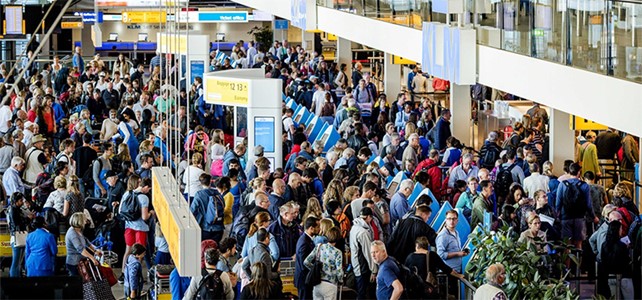Carriers must boost capacity, invest in digital technologies, optimise pricing and use data analytics to identify emerging trends, McKinsey says
More than two years after Covid-19 pandemic lockdowns nearly grounded the aviation industry, a sharper-than-expected recovery in air travel has airlines scrambling to keep up with a surge in demand.
A staffing shortage at airlines and airports is turning travel into a headache, as passengers face hours-long queues, flight delays, cancellations and worries over lost luggage during the busy summer season.
To navigate these challenges, airlines must focus on four key areas: building capacity, investing in digital technologies, introducing flexible pricing and using data analytics to understand consumer behaviour, according to a report by McKinsey.
“While the process is daunting, clear-sighted travel leaders know that preparing their organisations for a surge of travellers is also an opportunity to redefine their value propositions and make their offerings distinctive,” the global consultancy said.
“This will not only re-instil confidence in travel but also increase customer loyalty.”
To regain their footing, airlines must first bring back capacity by rehiring pilots, cabin crew and service staff made redundant during the pandemic and preparing mothballed planes for service, it said.
Secondly, investing in digital operations — including new technologies that help address post-pandemic travel pain points — will help ease the long wait times at airport check-ins.
Some airports are testing camera and digital technologies based on artificial intelligence to monitor crowd densities and reduce time spent standing in line.
Robots are also being deployed to maintain hygiene standards. Some are equipped with UV-light cleaners to disinfect areas and others are outfitted with body-temperature sensors to help minimise the risk of virus outbreaks.
Third, airlines should also anticipate changes in travel demand and optimise pricing according to the shifting habits of passengers.
“The profiles of airline passengers and hotel guests will be different: more leisure guests, later booking windows and higher demand for flexible tickets,” the report said.
“Historical booking curves are no longer a good indicator of current behaviour.”
Flexible pricing options can also ease passenger discomfort with today’s heightened levels of unpredictability, it said.
Finally, using data analytics can help airlines identify emerging trends and look for ways to collaborate across the travel industry, according to McKinsey.
As travel demand rebounds strongly, the return of business travel will be crucial to the sector’s fortunes.
Non-essential business travel for global companies has grown in double-digits this year, according to McKinsey.
In April, it grew by 13 percentage points to 86 per cent for domestic business travel and by 26 percentage points to 74 per cent for international corporate trips, compared to their levels in February, the report showed.
Meanwhile, as travel picks up, so do concerns about sustainability.
“Younger customers are especially conscious about airline emissions — 32 per cent report experiencing ‘flygskam’: shame of flying,” the report said.
Almost 40 per cent of travellers globally are now willing to pay at least 2 per cent more for carbon-neutral tickets, or about $20 for a $1,000 round-trip, and 36 per cent plan to fly less to reduce their climate impact.
“Airlines that move boldly, such as by replacing rather than modifying a loyalty programme with some kind of ‘planet-positive’ scheme, will stand out from competitors,” the report said.
























